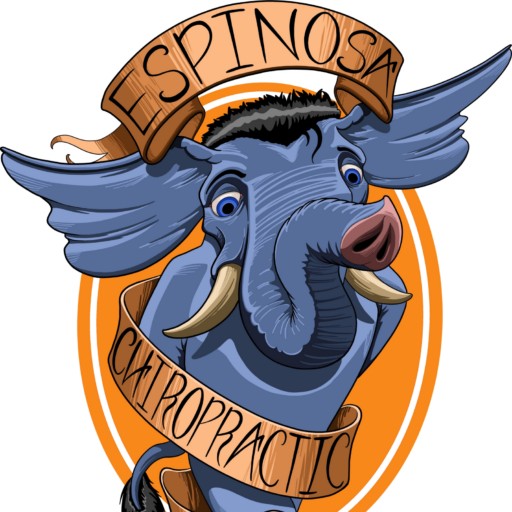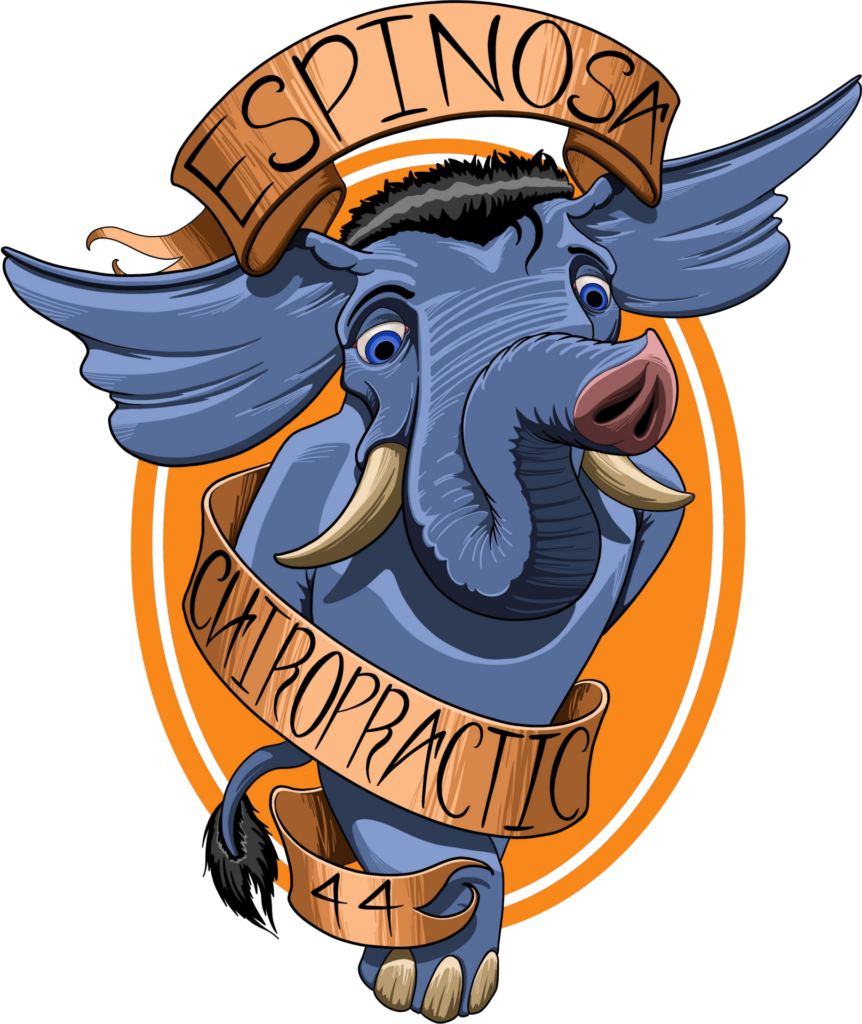Archive for May 2016
How to add in movement little by little

When it comes to preserving the health of your body, every little movement counts. Starting small is the best way to instill the habit. Once you have taught yourself an appreciation for leaving laziness behind, it is easy to spend more time moving. For example, going for a walk after dinner is a great way to help your body process the nutrients and digest your food. Even a 10 minute walk is better than nothing.
Tips:
- Combine exercise with entertainment. Treadmill with tunes or a podcast; practice yoga poses in front of the television; do crunches on the deck.
- For every little trip to the corner store, consider walking or biking. It will save you the gas and get you outside and walking.
- If you do drive, don’t look for the closest possible parking spot. Park on the top floor of the parking garage and get those extra steps.
- Do housework and work in the lawn by yourself or with family and friends. Make sure you protect your back.
- Walk as you talk on telephone calls.
Sitting really is becoming a disease. If your lifestyle requires a mix of commuting, sitting at work and your leisure demands a lot of sitting at home call our office so we can start finding some ways to fit in exercise and movement and break the cycle.
Dr. Raymond Espinosa, D.C.
Child’s Pose

The child’s pose is a yoga stretch that provides a plethora of benefits to people suffering from chronic low back pain.
- Promotes circulation
- Calms the mind and body
- Stretches hips and thighs
- Lengthens and stretches the spine
- Relieves neck and back pain
- Releases tension that is contained within shoulders, back and chest.
Yoga is synonymous with purposeful movement. This is a resting pose that focuses heavily on breathing control. Child’s pose can be done from the comfort of your own living room and is performed thus:
- Kneel with knees together and buttocks touching feet.
- Exhale and lower your torso over the thighs, with your forehead touching the ground.
- Lift the buttocks slightly and stretch your arms over your head, with palms touching the floor, until you feel the shoulder blades stretching across the back.
You can rest in this position for 1-3 minutes, or however long it takes for you to feel the spine stretching, relieving tension from tight areas. Child’s pose is an easy way to take a quick break from the couch and give your spine an invigorating stretch, without too much physical exertion. At Espinosa Family Chiropractic, we want to get people moving. Finding ways to break the monotony of a sedentary lifestyle is truly important for those who want to elongate the lifespan of their spines. Call our office in Sacramento at (916) 457-8825 to create a plan for a healthy back care lifestyle that will get you feeling fit.
Dr. Raymond Espinosa, D.C.
Movement
 With all the attention paid to vertebrae, people often neglect the spinal muscles, who play a crucial role in spinal health. Spinal problems are often caused by decreased mobility in the surrounding muscles and often times, poor posture and biomechanics leave the muscles imbalanced. With more and more people living sedentary lifestyles, it is no wonder that they come in complaining of non-specific back pain. At Espinosa Family Chiropractic, we focus on strengthening all of the muscles in the back, particularly as they apply to your specific condition. Often times, it only takes a conversation and a spinal assessment to determine muscle groups that have been strained to the brink. A stronger set of back muscles can only make your overall spinal health better.
With all the attention paid to vertebrae, people often neglect the spinal muscles, who play a crucial role in spinal health. Spinal problems are often caused by decreased mobility in the surrounding muscles and often times, poor posture and biomechanics leave the muscles imbalanced. With more and more people living sedentary lifestyles, it is no wonder that they come in complaining of non-specific back pain. At Espinosa Family Chiropractic, we focus on strengthening all of the muscles in the back, particularly as they apply to your specific condition. Often times, it only takes a conversation and a spinal assessment to determine muscle groups that have been strained to the brink. A stronger set of back muscles can only make your overall spinal health better.
Muscle groups in the back include:
- Paraspinals
- Iliopsoas
- Gluteus muscles
- Rectus abdominus
- Quadratus Lumborum
- Piriformis
- Trapezius group
At our office in Sacramento, we counsel you on how to use your body’s mechanics better and make your posture work for you. There is a common misconception that a stronger core means a more mobile back; this is a fallacy that comes from lack of knowledge: the abdominal muscles are used for stability, in effect, limiting movement rather than encouraging it. Having an awareness and knowledge of which muscle groups perform which function helps you become a more efficient mover. In any case, the worst thing you can do for your back is sit or stand stagnant for long periods of time. Intervertebral discs absorb fluid when they are not moving, making them stiffer and you less mobile.
Dr. Raymond Espinosa, D.C.
Thoracic Vertebrae
 Slumping shoulders are a common site across the forlorn landscape of 21st Century American posture habits. More jobs than ever are putting people in front of screens in poor ergonomic situations, leaving their posture and, consequently, the health of their spines at the mercy of long days spent stagnant, typing away with shoulders rounded and head forward. The amount of stress this puts on the spine is quantifiable only to the individual, but the general antagonistic qualities of poor workplace posture is that the weight of the head is magnified over an unstable spine, leaving joints immobile, muscles strained and vertebrae misaligned.
Slumping shoulders are a common site across the forlorn landscape of 21st Century American posture habits. More jobs than ever are putting people in front of screens in poor ergonomic situations, leaving their posture and, consequently, the health of their spines at the mercy of long days spent stagnant, typing away with shoulders rounded and head forward. The amount of stress this puts on the spine is quantifiable only to the individual, but the general antagonistic qualities of poor workplace posture is that the weight of the head is magnified over an unstable spine, leaving joints immobile, muscles strained and vertebrae misaligned.
At Espinosa Family Chiropractic, we are no stranger to poor posture, but we seek to impart you with the awareness of just how powerful posture is in changing your back health for the better. Understanding the mechanics of the spine is a good place to start, as it has been said that some people treat their spine as though it was one long bone. This is not true: each region has a different set of characteristics and functions. For example, the cervical vertebrae support the weight of your head and allow it to move, while the lumbar vertebrae support the greater mass of the body and provide stability.
But what about the thoracic vertebrae? The least injured, seemingly incognito part of the spine that still has a great purpose: to ease the burden on your lumbar. Learning how to use your thoracic vertebrae helps improve your overall range of motion, impacts lung capacity, and improves shoulder mechanics. The thoracic spine should not be a passerby in the daily posture battle. Call our office in Sacramento at (916) 457-0107 to start learning how all of the parts of your back contribute to your health.
Dr. Raymond Espinosa, D.C.
Walk for Health’s Sake

The bipedal human is a wonder to behold. But as time goes on we are walking less, choosing to commute instead of walk to work and choosing television over an evening stroll. The number one thing walking does for you: it promotes spinal balance, a cornerstone of good chiropractic health. Persistent (meaning daily) walking has innumerable benefits with the added quality of not being as traumatic to the body as a full bore run. The bones and muscles of the entire body are moving and strengthening as you walk, turning you into a more flexible human at an easy pace. Walking has many benefits:
- Reduces back pain, due to movement of previously static joints and the slight release of endorphins.
- Improves range of motion and makes you more resistant to injury from movement and promotes circulation of the blood and nutrients throughout all the members of the body.
- Helps with managing weight, which is a primary burden on the spine.
Standing upright and proud or slumped over and decrepit can make a huge difference in the way people perceive you. Body language is a large part of walking, and so a healthy dose of posture should smarten you up and send out the right signals. When reaping the benefits of a good walk, make sure you:
- Stand up straight without arching your back. Do not lean forward or back or let the pelvis tilt forward.
- Eyes forward, face forward: looking down encourages the rest of the head and neck to follow.
- Shoulders are the place people get tight during walks, and it shows. Be wary of static shoulders and give them a shake back to their natural position every once and a while.
Walking is a fun activity in and of itself, let alone adding the healthful benefits that are to be derived from a walk. At Espinosa Family Chiropractic, we can help you create a healthy back care lifestyle to manage pain or achieve whatever health goal you have set for yourself. Call our office in Sacramento at (916) 457-8825 to schedule an appointment today.
Dr. Raymond Espinosa, D.C.
For the Love of the Runner

Running imparts a euphoric feeling on some people that is hard to ascertain unless you have felt it yourself. It is what keeps these troopers moving through wind and rain, hail and searing heat. At Espinosa Family Chiropractic, we want hardcore runners to remember: posture is integral to your success and ultimate enjoyment of the sport. With the following technique in mind, you can minimize damage to spinal cartilage and reap the most benefit out of your exercise.
- Stay upright: you know you’re tired when the shoulders are slumped and you can barely breathe. But some people are not aware that they are slumping from the start.
- Keep your head centered above the spine so that its weight is properly balanced as you run.
- Keep the face faced forward and the body will follow. Do not look at the ground as it will set a precedent for the neck to follow, angling downwards and soon your shoulders will start to move toward each other, leaving you hunched over.
- Utilize your hips as your center of gravity. Letting the pelvis tilt forward will only lead to back pain. So keep your core upright.
These habits may feel like an adjustment at first but given enough repetition they will become second nature. And for the love of the runner: running everyday on concrete is bad for the cartilage in your back. If your back is aching after a run, it may be in need of some tender loving care, of the kind we offer at our practice in Sacramento. We treat sore tissues and misaligned vertebrae to ensure that you are running at your full mechanical advantage.Stop by our office on your next run or call us at (916) 457-8825 to schedule an appointment today.
Dr. Raymond Espinosa, D.C.
Preventing Rotator Cuff Injury
For anyone involved in a sport or job that involves repetitive lifting or overhead activity of the arms, stretching the shoulders and arms must be an indelible prerequisite to activity. At Espinosa Family Chiropractic, we believe that NO injury is the right type of injury: prevention is as much a part of our practice as rehabilitation.
Keep in mind that 5 minutes of stretching before work out could save you 5 weeks of recovery time from an avoidable injury.
For those involved in baseball, weight lifting, construction and other shoulder-heavy activities, we encourage you to avoid shoulder injury by focusing on strengthening the rotator cuff muscles. Because the rotator cuff is a collection of small muscles, we generally advise low resistance exercises with more repetitions, thereby gradually strengthening the region as a whole.
At our practice, we teach people how to stretch and strengthen their rotator cuff muscles: internal and external rotation exercises are simple enough to learn but they impart strength to the muscles that is indispensable for people who rely on their shoulders for activity. For people who suffer an injury to the rotator cuff, we advise resisting activity until the muscles can repair themselves. We perform range of motion assessments to determine how limited your shoulders really are as a result of injury. Frequent massage will encourage more active blood flow in the rotator cuff region, bringing oxygen and healing nutrients. Cycling between heat and ice reduces inflammation and allows the region to heal quicker.
Call our office in Sacramento at (916) 457-8825 to schedule an appointment today.
Dr. Raymond Espinosa, D.C.
Rotator Cuff Injuries
The rotator cuff is a region synonymous with baseball: because of the yanking motion and high arm speed involved in throwing a baseball, the shoulder muscles are consistently exposed to a repetitive stress. This group of muscles includes:
- Supraspinatus: elevation of the arm
- Infraspinatus: external rotation
- Teres minor: outward turning of the arm
- Subscapularis: internal rotation
These are the four muscles whose tendons connect the upper arm to the shoulder and stabilize the upper arm bone. They are also responsible for the wide range of motion in the shoulder and thus, are the most vulnerable to injury.
Any injury sustained by this group of muscles can fall under the umbrella of rotator cuff syndrome. Here are a few tasks that regularly rotate the shoulder:
- Painting
- Weight lifting
- Gardening
- Boxing
- Rowing
- Swimming
- Overhead motions
Injuries to the rotator cuff usually involve a tear to the muscle that results from one of two causes: traumatic injury or repetitive stress injury, which is the more common of the two. Pain is most often felt around the shoulder, intensifying when overhead motions are performed. Because they hinder athletic performance, rotator cuffs can be treated with surgery.
At Espinosa Family Chiropractic, we believe that given enough time, patience and proactive rehabilitation, the injury can heal itself to a point of comparative strength to pre-injury without the use of surgery. Damaged muscles and tendons benefit from massage therapy, which facilitates enhanced blood circulation: this brings healing nutrients and oxygen in greater amounts. Chiropractic adjustment to the shoulder joints allows the muscles to settle into a state of balance which helps them heal quicker.
Call our office in Sacramento at (916) 457-8825 and schedule an appointment today to find out how we can restore strength and flexibility to your damaged shoulder.
Dr. Raymond Espinosa, D.C.
